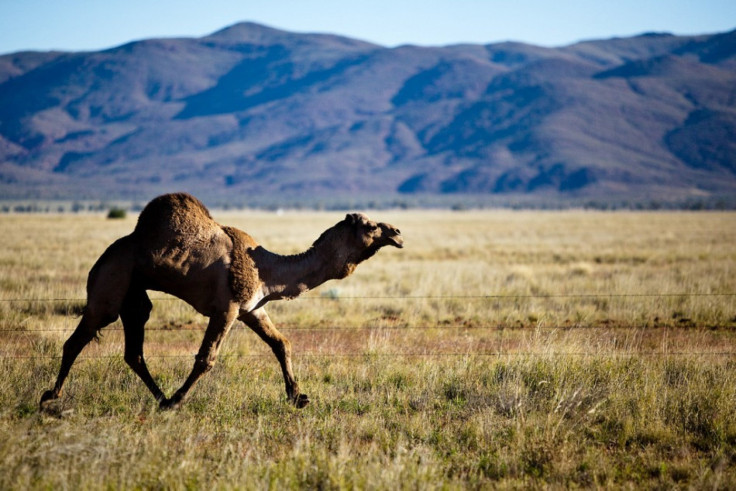Australia Culls 100,000 Feral Camels To Limit Environmental Damage

Some 100,000 feral camels have been culled from the Australian outback in order to control the animals' soaring population.
Damaging infrastructure, invading people's houses and ruining sacred Australian aboriginal sites, feral camels have been an expensive nuisance for Australia, costing the country about $10.5 million a year.
These camels can grow up to 7 feet tall and weigh 2,000 pounds. They travel great distance, covering about 70 kilometers (about 43 miles) each day. Controlling these animals became impossible when the population soared to about 1 million in the entire country.
The camels compete with sheep and cattle for food and trample vegetation, causing great problems for farmers in rural regions of the country.
Determined to contain the rising population -- which doubles every 9 years -- the Australian government budgeted $16 million for a project to reduce the camel herd.
Glenn Edwards, principal scientist with NT Department of Natural Resources in Alice Springs, who is working on the culling project, told the Associated Press that the population [of the camels] will need to be slashed by two-thirds to reduce catastrophic damage.
That figure translates to killing about 650,000 feral camels.
Jan Ferguson, Managing Director of Ninti One Ltd., the organisation responsible for the Australian Feral Camel Management Project, told Reuters that the project is not intended to eradicate feral camels completely from the Australian outback.
"Our aim is to commence managing their population to acceptable levels - and we are on track to achieve this goal," she explained.
"Over 100,000 feral camels have been removed from the Australian landscape through the project and the current rate of feral camel removal is around 75,000 per year, which is reducing the overall population and lowering their density around priority environmental sites."
Some landowners have expressed concerns over the cull, in which tens of thousands of camels have been shot. They felt that the camels have suffered unnecessarily, and that the camel meat is mostly wasted as much of it is left to rot.
However, these animals have not always been so troublesome in Australia.
Camels were originally introduced to Australia from India, Saudi Arabia, China and Mongolia in the 19th century as a form of transportation and to help in the construction of major telegraph and railways. Replaced in the 1930s by vehicle transport, tens of thousands were released to the wild.
Describing the rising feral camel population as a "crisis," Edwards told the Associated Press that the project is absolutely necessary and urgent.
© Copyright IBTimes 2025. All rights reserved.




















